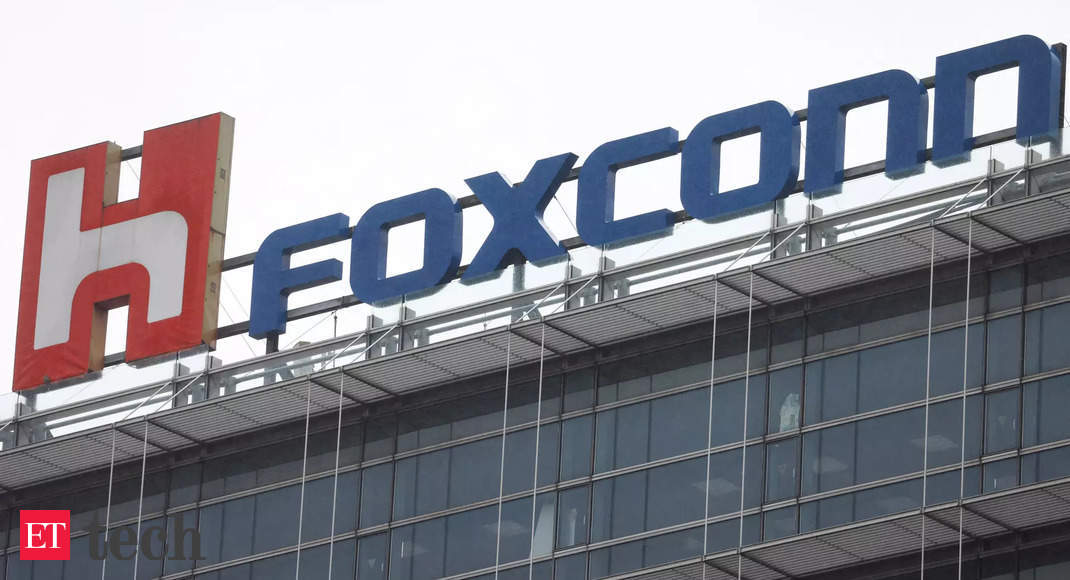NG Missile Vessels
FULL MEMBER

- Joined
- Apr 9, 2023
- Messages
- 1,600
- Reaction score
- 0
- Country
- Location
For decades, China has been known as the world's factory. China became a major manufacturing hub in the late 1970s and early 1980s, following the country's economic reforms. These reforms opened China's economy to foreign investment, and many companies began to outsource their manufacturing to China.
Historically there have been several reasons many companies have chosen to outsource to China:
●Low labor costs: China has a large and relatively young workforce, and labor costs in China are much lower than in other developed countries. This has made China an attractive destination for manufacturing companies that are looking to reduce their costs.
●Government support: The Chinese government has been very supportive of manufacturing, providing tax breaks, subsidies, and other incentives to attract foreign investment. This has helped to create a favorable environment for manufacturing in China.
●Infrastructure: China has well-developed infrastructure, including roads, ports, and airports. This makes it easy to transport goods in and out of China, which is essential for manufacturing.
●Technology: China has a strong technology sector, which has helped to make the country a leader in manufacturing. Chinese companies are at the forefront of developing new manufacturing technologies, which has helped to keep China competitive.
As a result of these factors, China has become a major hub for manufacturing of a wide range of products, including electronics, clothing, toys, and furniture.
It is important to note that outsourcing to China has not ever been without its risks. For example, companies may face quality control issues, intellectual property theft, and political instability. However, for many businesses, the potential benefits of outsourcing to China have been significant, and many companies found that the risks were worth taking
But in recent years, there have been some challenges to China’s position as a manufacturing hub. A growing number of companies are looking to move their manufacturing out of China. Companies are examining their heavy concentration in China. Boards and companies are reevaluating their risks and reviewing mitigation strategies.
This trend is being driven by a number of factors, including rising labor costs in China, the ongoing trade war between the United States and China, and concerns about China's political and economic stability.
Some examples of major companies that are considering moving some of their manufacturing away from China include:
●Intel%: Intel has said that it is considering moving some of its manufacturing out of China to the United States to comply with U.S. government regulations.
●Microsoft: Microsoft has said that it is considering moving some of its manufacturing out of China to Europe to reduce supply chain risks.
●Nike: Nike has said that it is considering moving some of its manufacturing out of China to Southeast Asia to improve quality and reduce costs.
●Dell: Dell has announced that it will be moving some of its manufacturing out of China to Vietnam and Mexico to reduce costs and improve efficiency.
Other countries are seizing this opportunity to gain share in the world's manufacturing efforts. Some of the countries that are becoming popular destinations for companies that are moving manufacturing out of China include Vietnam, India, Mexico, Indonesia. These countries offer lower labor costs, a more stable political environment, and closer proximity to major markets.
India in particular has made it clear that it wants to increase its economic and production output. In recent years, the Indian government has taken a number of steps to make this happen, including reducing taxes and regulations on businesses, investing in infrastructure, such as roads, ports, and airports, and making it easier for foreign companies to invest in India.
As a result of these efforts, India's economy has grown at a rapid pace in recent years. In 2022-23, India's GDP grew by 7.2%, the fastest pace of growth in any major economy.
The Indian government is confident that it can continue to grow its economy at a rapid pace in the years to come. In order to do this, the government plans to focus on increasing manufacturing output. India has a large and skilled workforce, and the government believes that it can attract more manufacturing investment from foreign companies.
Here is a brief overview:
●In 2019, Prime Minister Narendra Modi said that India's goal was to become a $5 trillion economy by 2025
●In 2021, the Indian government announced a new industrial policy,PLI, that aimed to boost manufacturing output
●In 2022, the Indian government launched a new initiative called "Make in India" that was designed to attract foreign investment in manufacturing.
Apple in particular has been a vanguard in moving its manufacturing out of China and into India. In 2022, Apple tripled its iPhone production in India, and it is expected to continue to increase its manufacturing presence in the country in the years to come.
Apple has cited a number of reasons for its decision to move some of its manufacturing to India. These reasons include:
●The Indian government has offered Apple a number of incentives to move its manufacturing to India, including tax breaks and subsidies.
●India has a large and skilled workforce that is able to manufacture Apple's products at a competitive cost.
●India is a growing market for Apple products, and the company believes that it can increase its sales in India by manufacturing its products locally.
It is still too early to say how much of Apple's manufacturing will eventually move to India. However, it is clear that India is becoming an increasingly important manufacturing hub for Apple, and the company is likely to continue to increase its manufacturing presence in the country in the years to come:
In 2021, Apple CEO Tim Cook said that the company was "investing heavily" in India and that it was "committed to building a long-term future" in the country.
●In 2022, Apple announced that it would be opening a new manufacturing plant in India.
●The plant is expected to create 50,000 jobs.
In 2023, Apple said that it would be manufacturing the iPhone 14 in India.This is the first time that Apple will be manufacturing the iPhone in India
As the trend of nearshoring and homeshoring continues to grow, board members should be asking management to take a close look at their supply chains and identify any single sourced items. These are items that are only manufactured in one place, and if there is a disruption in that supply chain, it could have a major impact on the company's bottom line.
Management should also be looking for ways to reduce their reliance on China for manufacturing. China is still the world's largest manufacturing country, but it is becoming increasingly difficult and expensive to do business there. By nearshoring or homeshoring their manufacturing, companies can de-risk their exposure and improve their bottom line.
Board members should be proactive in asking management about these issues. They should also be sure to get regular updates on the company's supply chain risk management plans. By taking these steps, board members can help to ensure that their company is prepared for the future of manufacturing.

 www.forbes.com
www.forbes.com
Historically there have been several reasons many companies have chosen to outsource to China:
●Low labor costs: China has a large and relatively young workforce, and labor costs in China are much lower than in other developed countries. This has made China an attractive destination for manufacturing companies that are looking to reduce their costs.
●Government support: The Chinese government has been very supportive of manufacturing, providing tax breaks, subsidies, and other incentives to attract foreign investment. This has helped to create a favorable environment for manufacturing in China.
●Infrastructure: China has well-developed infrastructure, including roads, ports, and airports. This makes it easy to transport goods in and out of China, which is essential for manufacturing.
●Technology: China has a strong technology sector, which has helped to make the country a leader in manufacturing. Chinese companies are at the forefront of developing new manufacturing technologies, which has helped to keep China competitive.
As a result of these factors, China has become a major hub for manufacturing of a wide range of products, including electronics, clothing, toys, and furniture.
It is important to note that outsourcing to China has not ever been without its risks. For example, companies may face quality control issues, intellectual property theft, and political instability. However, for many businesses, the potential benefits of outsourcing to China have been significant, and many companies found that the risks were worth taking
But in recent years, there have been some challenges to China’s position as a manufacturing hub. A growing number of companies are looking to move their manufacturing out of China. Companies are examining their heavy concentration in China. Boards and companies are reevaluating their risks and reviewing mitigation strategies.
This trend is being driven by a number of factors, including rising labor costs in China, the ongoing trade war between the United States and China, and concerns about China's political and economic stability.
Some examples of major companies that are considering moving some of their manufacturing away from China include:
●Intel%: Intel has said that it is considering moving some of its manufacturing out of China to the United States to comply with U.S. government regulations.
●Microsoft: Microsoft has said that it is considering moving some of its manufacturing out of China to Europe to reduce supply chain risks.
●Nike: Nike has said that it is considering moving some of its manufacturing out of China to Southeast Asia to improve quality and reduce costs.
●Dell: Dell has announced that it will be moving some of its manufacturing out of China to Vietnam and Mexico to reduce costs and improve efficiency.
Other countries are seizing this opportunity to gain share in the world's manufacturing efforts. Some of the countries that are becoming popular destinations for companies that are moving manufacturing out of China include Vietnam, India, Mexico, Indonesia. These countries offer lower labor costs, a more stable political environment, and closer proximity to major markets.
India in particular has made it clear that it wants to increase its economic and production output. In recent years, the Indian government has taken a number of steps to make this happen, including reducing taxes and regulations on businesses, investing in infrastructure, such as roads, ports, and airports, and making it easier for foreign companies to invest in India.
As a result of these efforts, India's economy has grown at a rapid pace in recent years. In 2022-23, India's GDP grew by 7.2%, the fastest pace of growth in any major economy.
The Indian government is confident that it can continue to grow its economy at a rapid pace in the years to come. In order to do this, the government plans to focus on increasing manufacturing output. India has a large and skilled workforce, and the government believes that it can attract more manufacturing investment from foreign companies.
Here is a brief overview:
●In 2019, Prime Minister Narendra Modi said that India's goal was to become a $5 trillion economy by 2025
●In 2021, the Indian government announced a new industrial policy,PLI, that aimed to boost manufacturing output
●In 2022, the Indian government launched a new initiative called "Make in India" that was designed to attract foreign investment in manufacturing.
Apple in particular has been a vanguard in moving its manufacturing out of China and into India. In 2022, Apple tripled its iPhone production in India, and it is expected to continue to increase its manufacturing presence in the country in the years to come.
Apple has cited a number of reasons for its decision to move some of its manufacturing to India. These reasons include:
●The Indian government has offered Apple a number of incentives to move its manufacturing to India, including tax breaks and subsidies.
●India has a large and skilled workforce that is able to manufacture Apple's products at a competitive cost.
●India is a growing market for Apple products, and the company believes that it can increase its sales in India by manufacturing its products locally.
It is still too early to say how much of Apple's manufacturing will eventually move to India. However, it is clear that India is becoming an increasingly important manufacturing hub for Apple, and the company is likely to continue to increase its manufacturing presence in the country in the years to come:
In 2021, Apple CEO Tim Cook said that the company was "investing heavily" in India and that it was "committed to building a long-term future" in the country.
●In 2022, Apple announced that it would be opening a new manufacturing plant in India.
●The plant is expected to create 50,000 jobs.
In 2023, Apple said that it would be manufacturing the iPhone 14 in India.This is the first time that Apple will be manufacturing the iPhone in India
As the trend of nearshoring and homeshoring continues to grow, board members should be asking management to take a close look at their supply chains and identify any single sourced items. These are items that are only manufactured in one place, and if there is a disruption in that supply chain, it could have a major impact on the company's bottom line.
Management should also be looking for ways to reduce their reliance on China for manufacturing. China is still the world's largest manufacturing country, but it is becoming increasingly difficult and expensive to do business there. By nearshoring or homeshoring their manufacturing, companies can de-risk their exposure and improve their bottom line.
Board members should be proactive in asking management about these issues. They should also be sure to get regular updates on the company's supply chain risk management plans. By taking these steps, board members can help to ensure that their company is prepared for the future of manufacturing.

Manufacturing Moving Out Of China For Friendlier Shores
A growing number of companies are looking to move their manufacturing out of China. Boards and companies are reevaluating their risks and reviewing mitigation strategies.
 www.forbes.com
www.forbes.com







